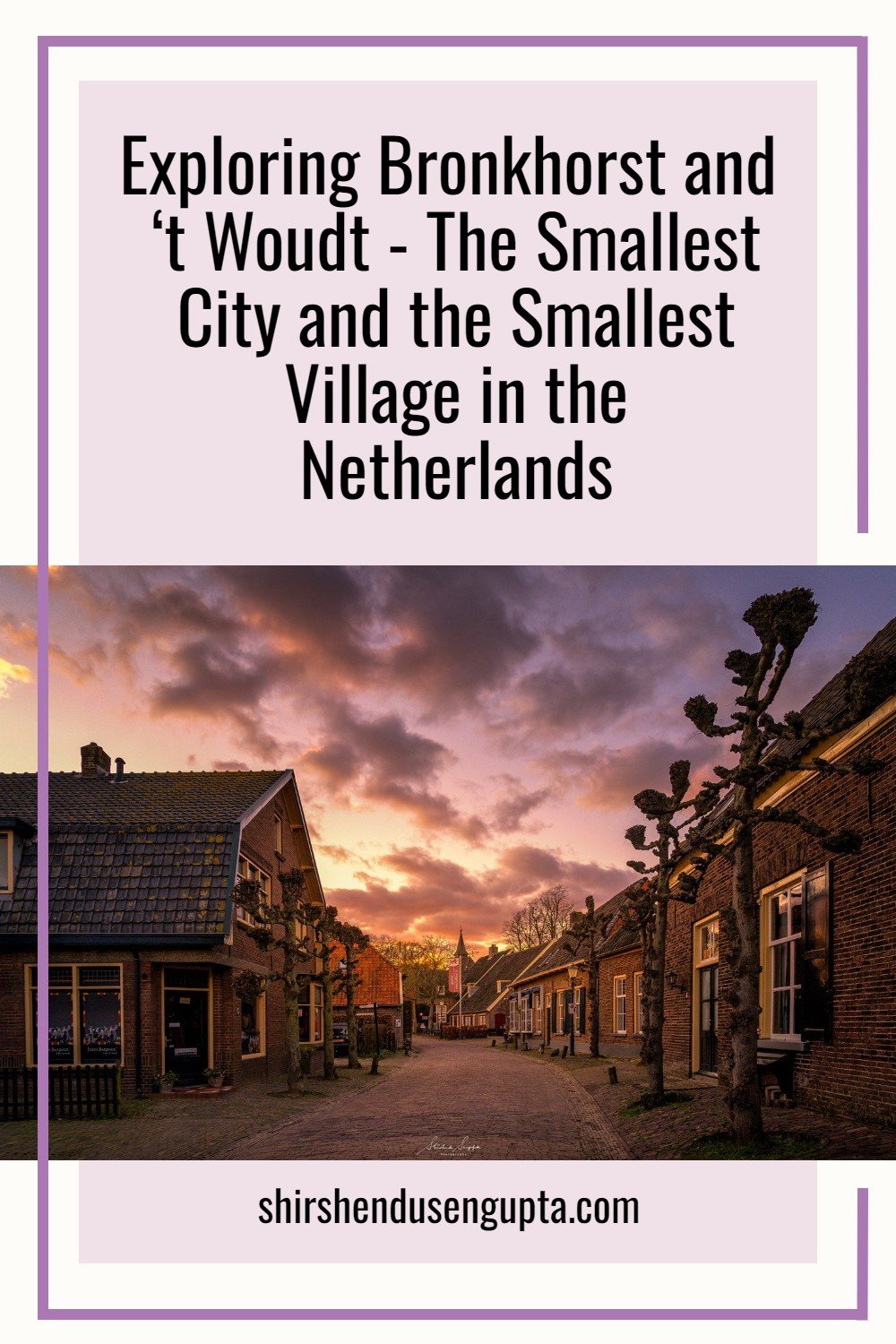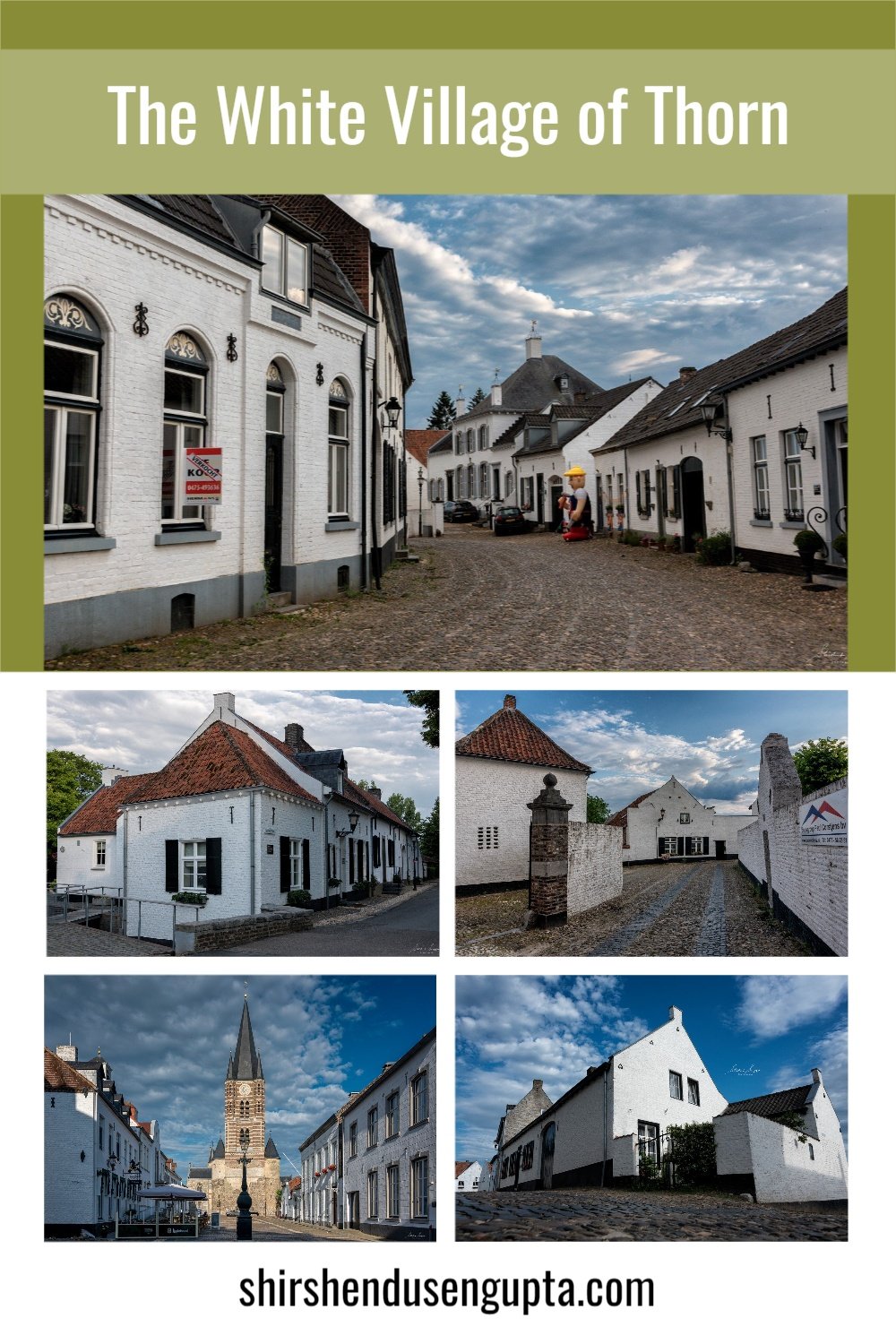7 Best Things to Do in the Beautiful Cotswolds Village of Bibury | Top 7 Must See Attractions and Activities on a Day Trip to Bibury, England, United Kingdom
Prologue
During a magical Christmas, we embarked on an unforgettable adventure, The British Isles in 2 Weeks | 4000 km Road Trip across Great Britain (England, Scotland, Wales) and Ireland (Republic of Ireland, Northern Ireland) from the Netherlands | Itinerary, Tips, and Tricks. What began as a simple plan soon turned into one of the most extraordinary journeys of our lives - a blend of coastal drives, medieval towns, misty castles, and heartwarming encounters that revealed the true soul of these storied isles. Every mile brought a new landscape, every turn whispered a new story, and every city left behind a piece of our hearts. So, based on our experience, today I’m going to take you along with me on a ride across the 7 best things to do in the beautiful Cotswolds village of Bibury. Let the journey begin!
Welcome to England
Welcome to England, a land of rich history, iconic landmarks, and breathtaking landscapes. As the largest country in the United Kingdom, England has been at the heart of European history for centuries, shaping global culture, politics, and innovation. Its roots trace back to prehistoric times, with evidence of early settlements such as Stonehenge. The Roman conquest in AD 43 brought urbanization, roads, and bathhouses, remnants of which still exist in places like Bath and London. After the fall of Rome, Anglo-Saxons dominated until the Norman Conquest of 1066, which transformed England’s legal and political system. The medieval era saw the rise of iconic castles, cathedrals, and the Magna Carta (1215), which laid the foundation for modern democracy. The Tudor and Stuart periods witnessed England’s expansion into a global empire, the rise of Shakespearean literature, and the turbulence of the English Civil War. The Industrial Revolution (18th – 19th century) cemented England as a world leader in technological and economic progress, with London at its heart.
Today, England is a dynamic blend of the past and present, offering everything from grand palaces and historic cathedrals to modern skyscrapers and vibrant cities. Whether exploring its countryside or bustling metropolis, England promises an unforgettable journey through history and culture!
About Bibury
Nestled in the heart of Gloucestershire, Bibury is often hailed as one of the most picturesque villages in England — a timeless gem of the Cotswolds that has captivated artists, writers, and travelers for centuries. The village’s charm lies in its honey-colored limestone cottages, rolling green meadows, and the gentle flow of the River Coln, which meanders gracefully through its center. Bibury’s most iconic landmark, Arlington Row, dates back to the 14th century, originally built as a monastic wool store before being converted into weavers' cottages in the 17th century. This row, now a protected National Trust property, epitomizes the region’s deep-rooted connection to the medieval wool trade, which brought prosperity to the Cotswolds. The village was described by William Morris, the famous 19th-century designer and poet, as “the most beautiful village in England,” a sentiment echoed by countless visitors since. Bibury's historical charm remains intact thanks to careful preservation, giving visitors a true glimpse into rural English life of centuries past. Whether you're wandering its scenic lanes, visiting the historic St. Mary's Church, or enjoying a quiet riverside picnic, Bibury offers a magical experience steeped in history, natural beauty, and quintessential English character. It’s a must-visit on any England itinerary.
7 Best Things to Do in Bibury
1. Walk through the Arlington Row
Arlington Row is Bibury’s most iconic and photographed site, immortalized on everything from postcards to passports. These quaint honey-colored cottages, nestled along the River Coln, date back to the 14th century when they were first built as a monastic wool store. In the 17th century, they were converted into weavers' cottages to support the thriving wool trade that made the Cotswolds wealthy. The row is an enduring symbol of medieval English craftsmanship, now owned and preserved by the National Trust. Set against a backdrop of rolling meadows and calm waters, Arlington Row captures the essence of rural England. It has been featured in numerous films and TV series, including Stardust and Bridget Jones’s Diary, and even appeared on the inside cover of UK passports. Visiting Arlington Row feels like stepping into a living postcard. The cottages are still privately owned and inhabited, but visitors can walk the lane, take photos, and soak in the rich heritage. The peaceful atmosphere, coupled with the historical significance of the wool industry, makes Arlington Row not just a beautiful spot but a window into England’s economic and architectural past.
2. Catch a Fish at the Bibury Trout Farm
Founded in 1902 by Arthur Severn, Bibury Trout Farm is one of the oldest working trout farms in England and a unique attraction in the heart of the village. The farm was originally established to stock local rivers with native brown trout, and today it continues to rear both brown and rainbow trout in its spring-fed waters from the Coln Valley. The location was chosen for its natural, crystal-clear waters, ideal for breeding healthy fish. Set within beautiful landscaped grounds, the trout farm is a peaceful and educational destination that offers visitors a rare opportunity to see the full cycle of fish farming up close. Families can enjoy the “catch your own” fishing experience, wander the tranquil gardens, or relax in the farm’s café, which serves fresh, locally sourced dishes — including the farm’s own trout. There’s also a gift shop featuring regional treats and farm-related souvenirs. More than just a working fishery, Bibury Trout Farm reflects centuries-old rural practices and a sustainable approach to local food production. It’s a perfect blend of tradition and recreation, offering a glimpse into a quieter, slower-paced way of life deeply connected to the surrounding Cotswolds landscape.
3. Visit the St. Mary’s Church
Nestled quietly among lush greenery, St. Mary’s Church in Bibury is a serene spot that offers both spiritual reflection and a deep sense of history. Parts of the church date back to Saxon times, with architectural features from the 12th century onwards, including a striking Norman doorway and a series of medieval windows. The church has undergone several restorations over the centuries, most notably during the Victorian period, when prominent designer William Morris, a frequent visitor to Bibury, praised its charm and simplicity. The building retains its timeless beauty, with Cotswold stone architecture, original woodwork, and a tranquil churchyard that contains ancient gravestones and yew trees. Inside, visitors can find beautiful stained glass windows, a 15th-century font, and traces of earlier wall paintings. St. Mary’s Church has long served as a place of worship for the local community and remains active today. It stands as a symbol of continuity and resilience, connecting modern Bibury with its spiritual roots. Whether you're exploring its historic features or simply seeking a moment of peace, this centuries-old church offers a quiet refuge and an authentic link to the village's ecclesiastical past.
4. Drop by at the Arlington Mill (Bibury Gift Shop)
Standing beside the River Coln, Arlington Mill is a beautifully preserved former water mill that once played a central role in Bibury’s wool and grain industries. First recorded in the 17th century, the mill harnessed the river’s power to grind corn and later supported textile production during the wool trade boom. Though the mill ceased its original functions long ago, it has since been lovingly restored and repurposed, most recently housing the charming Bibury Gift Shop. Visitors can explore the mill’s picturesque surroundings and browse an array of locally made products, from Cotswold-themed gifts to artisan food and handmade crafts. The building itself, with its timber beams and exposed stonework, retains much of its historic charm, offering a glimpse into the industrial heritage of the region. A stroll through the mill’s interior reveals old milling equipment and references to the village’s working-class roots, creating a unique blend of retail and heritage. Today, Arlington Mill stands not only as a tribute to Bibury’s industrious past but also as a thriving destination for travelers looking to take home a piece of the Cotswolds’ cultural richness.
5. Grab a drink at the Catherine Wheel Pub
A cornerstone of village life, The Catherine Wheel is Bibury’s beloved pub, exuding rustic charm and traditional English hospitality. Housed in a 17th-century Cotswold stone building, the pub takes its name from the spiked wheel associated with Saint Catherine of Alexandria, a symbol with strong medieval religious roots. Over the centuries, the Catherine Wheel has served as a gathering place for locals and travelers alike, offering warm fires in winter, a shaded beer garden in summer, and hearty Cotswold fare all year round. The interior boasts low wooden beams, historic photographs, and cozy nooks that invite guests to linger. The menu celebrates local ingredients, featuring dishes like Gloucestershire sausages, beer-battered fish and chips, and seasonal pies. The pub’s real ale selection and locally brewed ciders add to its appeal, offering a taste of regional craftsmanship. Beyond its food and drink, The Catherine Wheel stands as a social anchor in Bibury, echoing a long tradition of English village pubs serving as hubs for storytelling, community, and conviviality. Whether you stop in for a pint or a full meal, a visit here promises an authentic and heartwarming Cotswolds experience.
6. Stop by the Bibury Village Hall
Though unassuming at first glance, Bibury Village Hall is a vital part of the community fabric and a testament to the village’s commitment to preserving its local traditions and rural spirit. The hall was built in the early 20th century and has since functioned as a multi-purpose venue for residents and visitors alike. With its classic stone façade and modest charm, the hall hosts a variety of events throughout the year, including craft fairs, local exhibitions, community meetings, and social gatherings. Its presence reflects the enduring strength of village life, where shared spaces and face-to-face interaction remain central to daily living. For travelers, catching an event or even peeking inside provides a rare opportunity to connect with the modern rhythm of Bibury, one that still beats in harmony with its historic roots. Whether it’s a local artisan selling handmade goods or a community tea party echoing with laughter, Bibury Village Hall keeps the spirit of Cotswold camaraderie alive. It's not just a building — it's a living reminder that while Bibury's beauty may attract the world, its community heart is what truly defines it.
7. Check out the Bibury Post Office
More than just a place to send a postcard, the Bibury Post Office is a delightful stop that blends functionality with charm. Housed in a traditional Cotswold stone cottage, it serves not only as a postal service center but also as a local shop and informal visitor hub. With a history stretching back over a century, the post office has long been a cornerstone of village life — connecting Bibury to the wider world in a time when handwritten letters and telegrams were the lifeline of rural communities. Today, it retains much of that historical charm while evolving with modern needs. Visitors can purchase local maps, guidebooks, souvenirs, and traditional sweets, or chat with friendly staff who are often brimming with recommendations about what to see and do in the area. In an age of digital everything, Bibury Post Office offers a nostalgic return to slower, simpler times — when a trip to the post was part of the village routine. As one of the few remaining village post offices in the Cotswolds, it holds cultural significance and offers a genuine slice of daily life in this timeless English village.
Visiting Bibury
Best Time to Visit: The best time to visit Bibury is during spring (April – June) and autumn (September – October) when the weather is mild and the village is bathed in natural color. In spring, blooming flowers enhance the charm of Arlington Row, while autumn paints the trees along the River Coln in golden hues. Summer is also popular but can be crowded with tourists. Winter has its own magic, offering a quieter, frost-kissed village experience. Regardless of the season, Bibury retains its postcard-worthy beauty year-round, making it an ideal destination for photographers, nature lovers, and anyone seeking a peaceful English countryside escape. As already mentioned, we visited Bibury during Christmas.
Number of Days to Stay: A day trip to Bibury is usually sufficient to explore its main attractions, but staying for one or two nights allows for a deeper, more relaxed experience. With extra time, you can enjoy an unrushed stroll along the River Coln, dine at local eateries like The Catherine Wheel, and perhaps explore nearby Cotswold villages such as Bourton-on-the-Water or Cirencester. Staying overnight also lets you experience the village during quieter hours — early mornings and evenings — when the day-trippers have left and Bibury truly feels like a timeless escape. It's ideal for a tranquil weekend retreat in the heart of the Cotswolds. We did a day trip to Bibury from London.
Best Place to Stay: Bibury offers a handful of charming accommodation options that reflect the village’s rustic elegance. One of the most recommended places to stay is The Swan Hotel (visible in the backdrop of the Bibury Trout Farm image in the article above), a historic coaching inn nestled beside the River Coln. It features beautifully appointed rooms, a riverside garden, and an excellent restaurant. For a more homely experience, local bed and breakfasts like Cotteswold House provide cozy stays with a personal touch. Staying in Bibury allows you to wake up to birdsong and tranquil countryside views. Booking in advance is advised, especially in peak seasons, as options in this small village are limited but delightful.
Best Way to Arrive: The most convenient way to reach Bibury is by car, offering flexibility to explore both the village and the surrounding Cotswolds. Bibury is about 90 minutes from Oxford and two hours from London by car. Public transport options are limited but possible — take a train to Kemble Station from London Paddington or Swindon, followed by a 30-minute taxi ride or bus journey. Guided day tours from London and Bath also frequently include Bibury on their itineraries. Driving, however, remains the most practical and scenic route, allowing visitors to fully experience the rolling countryside and nearby attractions. We drove to Bibury from London in our own car.
Best Local Mode of Conveyance: Bibury is a small, walkable village, and the best way to explore it is on foot. All major attractions are within easy walking distance of each other. The scenic footpaths along the River Coln and throughout the village offer stunning views and quiet moments perfect for a leisurely stroll. If you're staying in the area and wish to explore nearby Cotswold towns, having a car is useful. However, within Bibury itself, there’s no need for public transport — comfortable shoes and a camera are all you need to take in its timeless charm.
Epilogue
So that brings us to the end of our journey across the 7 best things to do in the beautiful Cotswolds village of Bibury. Please let us know in the comments below if you enjoyed reading this article.
And if you want to read the day-by-day account of our 4000 km road run across all countries of the British Isles during Christmas, please visit our article The British Isles in 2 Weeks | 4000 km Road Trip across Great Britain (England, Scotland, Wales) and Ireland (Republic of Ireland, Northern Ireland) from the Netherlands | Itinerary, Tips, and Tricks. Until then, merry traveling and happy shooting!
Pin the article
Bookmark the article for reading later!
Want to license/buy photos in the article?
License photos for commercial/editorial use or buy photo prints!
Want us to write an article for you?
Articles for magazines, newspapers, and websites!
Watch our Videos
Check out our videos on our Youtube Channel!
Join the Newsletter
Get updates on our latest articles!
We respect your privacy. Read our policy here.
































